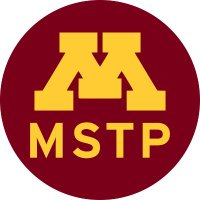
AraqueLab
@labaraque
Neuroscience Lab at the University of Minnesota.
Our lab focuses on the mechanisms and physiological consequences of astrocyte-neuron signaling.
ID: 1112787841849966592
http://www.araquelab.com 01-04-2019 18:44:30
87 Tweet
1,1K Followers
342 Following


It will be a pleasure to talk about how astrocytes regulate synaptic physiology and the consequences in neural network and behavior. See you all there! University of Minnesota Neuroscience Biocytogen Mayo Clinic


It was a great pleasure to present our results at #EMBOmetabolism2022 in Malaga, Spain! Exciting conference! Helmholtz Diabetes Center (HDC) Cristina García Cáceres


Don't miss it! University of Minnesota Neuroscience University of Minnesota #astrocy #neuroscience #Neuron

Great talk by my friend David Fernandez de Sevilla David Fdez de Sevilla in Neuroplasticity topics in PhD in Neuroscience University of Valparaiso Universidad de Valparaíso thank you my friend.


Today, our postdoct Jose A. Noriega will be presenting our recent results about astrocytes and endocannabinoids in the #WCBR2023 at 4:30 pm. Do not miss this interesting talk.





Do not miss our last preprint from our amazing postdocs Carmen Pérez de Nanclares and Jose A. Noriega showing how Bergmann glia regulates intrinsic properties of purkinje cells contributing to spinocerebellar ataxia type-1

“La primera reacción ante un descubrimiento rompedor es la de mofarse”. Alfonso Araque descubrió en 1998 que los astrocitos regulan las sinapsis. Nadie le creyó. Entrevista de M. Galan, alumna máster #Neurociencia UAM Autónoma Madrid AraqueLab SENC Los blogs de ABC abcblogs.abc.es/ventana-cerebr…


Thanks @JoeyCheers for your support. Thanks AraqueLab for giving me the opportunity to work on this wonderful project. Thanks also to the judges who believed in my work. Moreover, congratulations to @lujanpema for his award. Cannabinoid GRC 2023 University of Minnesota Neuroscience

Amazing paper! Congratulations JuliRosa_Neuro and team, and thank you for making me part of it.

Finally, last paper of the lab is out! Happy to share the great work led by Candela González-Arias with the collaboration of Andrea Sánchez Ruiz Julio Esparza Lucia Arancibia Cristina Sánchez-Puelles 🔬🧠 Frank Kirchhoff Jorge Ramírez-Franco and Davide Gobbo nature.com/articles/s4138…

The Araque Lab is proud to announce that in collaboration with the Cvetanovic Lab, University of Minnesota Neuroscience, we have published a new article in the Journal of Neurobiology of Disease! Led by our postdocs Jose A. Noriega and Carmen Pérez de Nanclares sciencedirect.com/science/articl…

I am thrilled to see my postdoctoral work finally published in Nature Neuroscience ! (free access here: rdcu.be/dpQhG). We used in vivo ephys and a new behavioral paradigm to elucidate what the PFC represents when mice face danger. These are the main findings of our work: 🧵



